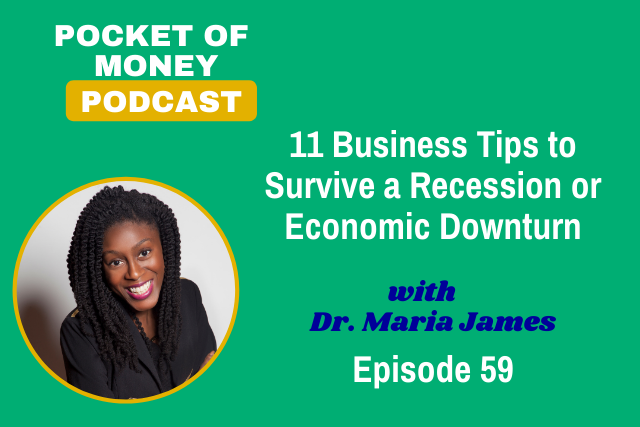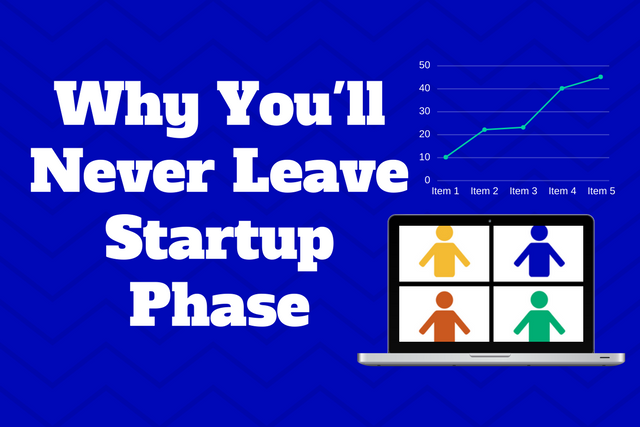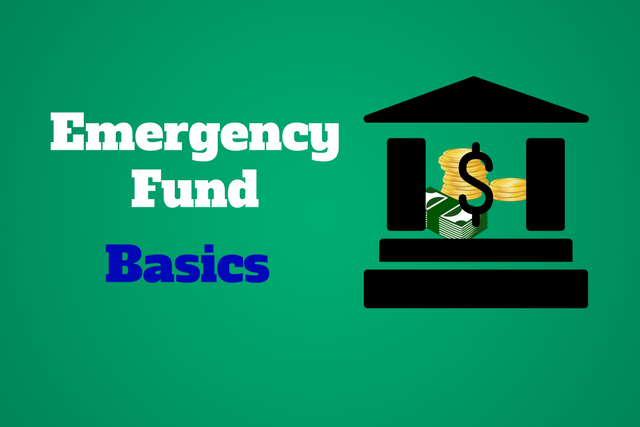POM059: 11 Business Tips to Survive a Recession or Economic Downturn

Listen and subscribe: iTunes, Stitcher, Spotify
The entrepreneur roller coaster may have been crazier than normal for the past 12 months. No one really foresaw such craziness was going to happen. However, it’s a matter of time before a recession hits. You can take steps to make it through the current downturn and to make sure you’ll weather a recession successfully. In this episode, you’ll learn eleven strategic tips and actions to recession-proof your business. These tips apply whether you’re a service or product-based business.
Resources Mentioned:
Go from “I hate budgeting” to consistently planning, successfully budgeting, and saving money every month with the WISE Budget Box subscription. Only $75 per quarter ($25/month).
Just when you start to fall off, the WISE Budget Box will give you a motivational jolt and a box filled with a new set of tools every 90 days. You’ll also have continuous access to the WISE Financial Fitness portal filled with courses, protocols, and digital resources.
Get organized, make progress, remove overwhelm, and increase your revenue. You’ll design clear goals and a powerful strategy to achieve them. Don’t just make a long to-do list that leaves you in overwhelm.
Focus on tasks not just your schedule. Clearly write tasks each day that will help you move your projects along. Organize tasks each day by project to help with project management. Stay ultra-focused each quarter. You’ll power through your tasks with this 90 day progress system.
This financial planner helps you consistently budget (by month or paycheck), analyze your budget, and track and analyze side hustle earnings for profit. If you don’t like your financial situation, then change it.
I reveal major lessons l learned during my journey, and powerful affirmations and epiphanies that will keep you motivated and progressing as an entrepreneur.
Thanks for Listening
If you have any comments or questions about this episode, leave a comment below. If you liked what you heard subscribe on iTunes, Stitcher, or wherever you listen to podcasts and rate it. This helps the podcast show up for others.
Episode Transcript:
Hi Success Rebels. This is Dr. Maria James, The Money Scientist. For many of us, it’s been a tough time to be an entrepreneur or small business owner. While for some of us, the last 12 months or so have been the most lucrative time period in quite a while.
I’ve spoken with colleagues who hit revenue milestones and have spoken with some whose revenue came to a halt.
I guess like any major event or situation, the pandemic made some industries and side hustles become popular. For example, accounting became really hot as people try to make sure their finances were on point. Of course, everything virtual went through the roof. I saw things like virtual babysitting and virtual storytime become very popular.
Everyone felt like they had to become a expert on zoom overnight. Of course, this resulted in zoom stock going through the roof.
No matter your business or side hustle you had to do some sort of pivoting as a new normal was established. Even if your business provided and online service or product, you still had to pivot because you were audience had a mindset shift.
I made some pivots as well to accommodate the new normal. For example, people were complaining about computer or screen fatigue. Since so many words teleworking and schooling when online as well, after the work or school the people did not want to stay looking at their screens.
I launched a brand-new product called the WISE Budget Box: Success Rebel Budgeting Kit. It’s a physical box with a budgeting planner, planner stickers, tracking sheets, and other goodies to get people to consistently plan, successfully budget, and save money.
It moves away from the online budgeting spreadsheet and gives people a break from the screen and a fun way to budget using a 90 day system.
This isn’t the only shift that I needed to make in order to recession-proof my business.
Let’s get into the tips to really hammer home the business aspects or changes necessary.
We will start off with general proven actions to take. Then we will move into more specific actions and talk about examples so you can see a real-life application of the concept.
1) Worst-Case Scenario
First, you need to know what could be the worst-case scenario in order to properly prepare for it. You’re going to do a very simplified version of budget projections and financial modeling. Think about and determine the potential business challenges and obstacles.
- For example, think about during a recession what challenges could your business face.
- Then think about how those challenges will affect the revenue and expenses.
- Would revenue drop across all revenue streams? Which revenue streams would be most impacted? What is the expected decrease?
- What will be the effect on expenses?
Create a budget projection based on the changes you believe may occur. This will help you to prepare for shifting and scaling up revenue streams to make up for the decrease in other revenue streams. Even if you have only one revenue stream it will help you prepare to survive those numbers.
Create rules and policies as to when these solutions should be implemented and how. Have the plan strategy completely flushed out so when it’s go time you’re ready.
For each new year, each quarter, and a new launch, I do financial modeling to assess worst-case, expected, and best scenarios. I look at the numbers and make sure that I am able to handle the good or the bad.
2) List of vendor alternatives
From the current disruption caused by COVID19, you can see that having alternatives for suppliers and any vendors that you use is key. A lot of businesses that depended on suppliers based in China had severe delays in receiving products. They were left scrambling to find quality vendors to replace their current vendors.
You may have merchandise, a book, or other products you sell during your presentation or in the back of the room.
Create a list of backup vendors. Research and qualify them so if you need to use an alternate for any reason you already know you will receive quality items and be familiar with their process. Do this for every vendor in your business, as much as you can. Try to vary their characteristics, like geographic location, account for things like production capacity.
Think about alternative distribution channels for physical or online/digital products as well. Not only do you need to have backup vendors and suppliers to receive items you also want to think about distribution. If your current distribution channels are affected, who will your backup be?
I have two planners, a financial planner called the financial planning roadmap and a business planner called the business goals planner. These are printed physical books so I make sure to research several different printers and have a list as to who I can and want to work with to print my planners. I have two alternates that will keep the pricing and quality about the same. I did the same for my book The Brave Entrepreneur’s Desk.
You want to do your best to maintain your profit margin.
3) Alternative Business Model and Audience
You’ll need to do the same thing for your business model and target audience. I want you to think about what shifts you will need to make in your business in order to continue reaching clients and customers as well as offering products or services.
Many speakers have had to revise in-person workshops and presentations to be suitable and impactful online. Their pitches had to shift. The benefits presented had to be adjusted to show how they will still be experienced when presented online. Of course, budgets have to be adjusted as well.
For example, if you’re retail that could mean figuring out how to scale up the online store or how to offer a service that is completely online or digital. How are you going to continue closing the sale?
Think about who your target audience is and how you can shift the packages or offers to suit the new environment. The major question you will need to ask is which of your offers is a necessity for your customer or client? That’s where you focus your efforts. Necessities will continue to sell in good and bad times. The marketing is just different.
4) Diversify Your Revenue
It’s common for small businesses to have only one or a few clients that make up the majority of the revenue. This client or clients keep the lights on and the business operating. If they decide to take business elsewhere, then the business is immediately in severe trouble. Don’t put yourself in that position.
Not only do you want to make sure you have multiple revenue streams, you also want to have diversity in your customer base. For example, let’s say your industry was dog walking. In order to diversify, you could also include dog grooming, dog sitting, housesitting, a dog toy subscription box. See what I’m saying. Then diversify even more by diversifying to whom you offer the services: working professionals, stay at home parents, seniors, animal therapy organizations.
5) Have a Business Emergency Fund
You may have seen people online criticizing the corporations for not being able to survive decrease revenue for a couple of months. People were asking how or why are they expected to have money set aside to survive for several months but these huge businesses do not.
I always advise small business owners to have a business emergency fund. To start out, create a six-month fund of six months’ worth of operations costs saved. Then move to 12 months and if and when you can 18 months’ worth of operations expenses set aside. I base this recommendation on my experiences when I first became an entrepreneur. I had no idea what I was doing, those lessons are for another time, but I was able to survive taking care of my household and running the business for 12 months. If I would’ve had a little bit more saved up I would’ve been golden.
As we can see with COVID19, things happen where your revenue can be severely impacted for a long period of time. Things that are not under your control. It’s good to have a stash of cash or easily liquidated assets that can keep you operating during that time.
You need enough money set aside to pay all of the business expenses and implement the worst-case scenario strategy.
If you haven’t been severely impacted by the pandemic, start working on setting aside that operations fund. Talk to your accountant to determine the best way and place to set it aside.
6) Create A Necessity Service or Product
Spending decreases during a recession, obviously right. If you offer items or service that is considered a luxury then your revenue could significantly decrease or dry up. However, things that are deemed a necessity sell whether times are good or bad. For some industries, the purchase of these items will increase when times are bad.
How can you change what you offer into a necessity or change the perception so that people will want to purchase this item even when times are bad? Think about how the consumer mindset has shifted or changed? How can you shift with them? People and businesses are more focused on survival than luxuries. Not everyone, but the majority will have shifted this way.
For example, one industry that gets really busy is accounting. Accountants are still necessary to manage the money, especially for taxes. People and businesses are more likely to go to an accountant to make sure they’re getting the most tax breaks as possible. They want to know how can I lower my tax burden?
Instead of buying brand-new clothes, some will start visiting more thrift shops. If you sell clothes opening up a thrift shop section in your store or on your website similar to services provided by companies like thred up and poshmark will help you retain business. Think outside the box and get creative and shift with them. Figure out how you can make it a necessity.
Also pre-selling upcoming offers will help you bring in money and the person be able to secure something for later on when they are more likely to use it. Whether you allow them to put a down payment or start a payment plan or different things like that. If they have all the money up front that works as well. This can allow them to secure your service or product well in advance and bring in revenue for you. This is not anything new or fancy think of a ski resort pre-selling season tickets.
Think about how you can apply such things in your business.
7) DIY Options
More people are going to be staying in the house and are going to be tightening the purse strings. Think of how you can have more do-it-yourself options available for people. Those are going to sell a lot more and a lot faster than the done for you services and offers right now.
Really simple example, everyone has to eat. You are going to buy food and groceries. Grocery store revenue is increasing dramatically because more people are going to be cooking at home. They are and will be buying the ingredients in order to cook at home versus paying more to go out to a restaurant.
Food is the necessity and the grocery store is the DIY option. They are going to go pick up the ingredients and then go home and cook to maximize their dollars. DIY options that you can have and implement in your business where you’re still able to get those sales, you are still able to help your customer.
You’re still providing value and information and services to your customers and your audience but now it’s more of a DIY. It’s a little bit more passive. Figure out how can you implement that in your business.
8) Anticipate Next
Don’t only concentrate on what is happening and going on right now. Think about what they need right now and think about what your client or customer is going to need next. This is going to help increase the lifecycle of your customer or client.
This is also going to help you to keep the money coming. If you can’t provide it then figure out who you can partner with that’s going to be able to provide what they need next. JV partnerships and affiliate marketing can be quite lucrative for you and extremely helpful to your audience.
9) Lifestyle shift
As I said, more people are going to be staying inside so also consider that lifestyle shift. Think about what is going on with your client or customer, getting into their minds and how that’s affecting behavior in the new environment.
It will definitely help you create things in order to keep the money coming in and still serve them. That’s how you continue to get the money coming in, continue to serve. As you think about that lifestyle shift and their experience, what is something that they can do in their homes right.
For example, a business that had their sales absolutely skyrocket during the last recession was Snuggie. You know, you seen the commercial for the blanket with sleeves. I will admit. I do not like the cold and I have a Snuggie.
Their sales skyrocketed because people were at home. People were staying in for like movie night, or just sitting in the house doing something. Now the Snuggie is something that even though is more of a luxury item and not a necessity, let’s face it we could all use a blanket to ward off the cold, it was priced and positioned in a way that it was okay to purchase that luxury in people’s minds.
Another company that absolutely thrived was Netflix. Netflix shifted with the technology and the new environment during the last recession. That’s when they added streaming. Remember before Netflix actually had DVD delivery. You let them know what DVDs you wanted and they would actually physically send the DVDs in the mail to your house. During the last recession they added streaming. This kept people around because now it is unlimited. I can watch unlimited number of movies at a similar price point. I don’t have to leave my house. I don’t even have to go to the mailbox.
Shifting to adjust to the new environment. Their sales skyrocketed. They were in the mindset of the customer and shifted to give them what they needed so they can keep their revenue going and actually increase their profit and sales during a recession.
10) New Audience
Think about expanding to a new audience. Have it planned out where you can expand so even if you’re offering the product for the same service; if you offer to a new audience that opens up a whole new ballgame.
For example, the toy industry has been in trouble for quite a while. During the recession, toys are luxuries so those sales usually go down. The only company who really increased their profits and did it by 63% was Lego.
During the last recession even as the entire toy industry was tanking Lego increase their profits by 63% and why was that? Because they expanded beyond the US to Asia and Europe. The United States was their base and they expanded going to Asia and Europe.
They added a new audience, marketed to new people and was able to thrive during the recession. Who else needs what your offering? You can have more than one target audience, likely very similar but just enough of a tweak that opens up a whole new arena. Although before were talking about shifting your products and services, you that’s not the only way. Really think about who else needs what you have to offer.
11) Redesign Offers
Shift your business model, redesign your products and services. Let’s say you’re not too keen on expanding into new audience or you’ve already done that and your you still need to shift. Redesign a product or service and let your consumers or customers know that you’re doing it.
Let them know about all the new great things that are coming up, all the new things that you’re doing in order to serve them better.
Dominoes did that during the last recession, in 2009 they said during re-branding and marketing that the people said that their pizza taste like cardboard. They put it all out there and said hey we’re changing a recipe, we’re changing this retaining that, changing this and that. By shifting and redesigning and listening to their customers they were able to actually thrive during the last recession by changing things up.
Make sure that you are getting feedback from your customers or clients and think about how you can redesign or shift things so that during the recession you will still be able to bring in revenue and thrive. The key is to have the marketing around it. Don’t quietly behind the scenes simply change things. Be straight up to let them know with full transparency. Hey we’re listening to you, we value you, we are implementing these changes to serve you better.
Applying some or all of these tips to your business or side hustle will help you to recession-proof your business and/or be ready to easily pivot when the next event occurs that necessitates change.
I’ll include links to all the resources mentioned on the show notes page at pocketofmoney.com. Alright, until next time.






Responses